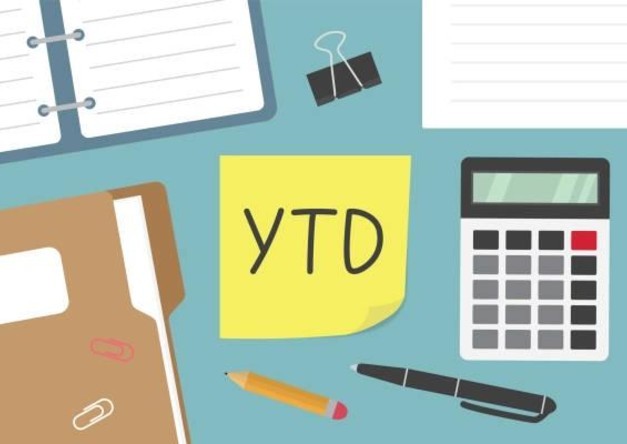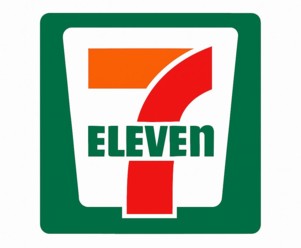YTD Meaning: How To Calculate Your Total Year-To-Date
By Jaden Miller , August 15 2025

You may have looked at your pay stub and noticed the “YTD” abbreviation. It stands for “Year-to-Date,” and while you may think that it’s not important, it is actually pretty useful. The amount plays a big role in helping you understand your earnings, taxes, and deductions over the year.
You can think of it as the total amount of your financial activity from the beginning of the year to your most recent paycheck. Your YTD column in your paystub can tell you much more about your total income.
This guide explains the YTD meaning on your paystub and why you need to pay attention to it. You’ll be able to understand how to calculate your YTD. This can help you know what those numbers mean and enable you to plan ahead.
YTD Meaning on Your Paycheck
YTD stands for “Year-to-Date”, and it adds what you earn from your first day of work in a new year. It adds it up till the current date. Instead of adding up all your earnings for a month, it is your full-year earnings. It adds everything from January 1st to your most recent paycheck or statement date.
In payroll, YTD usually tells you how much money you’ve earned and how much tax has been taken out. You’ll know the simple details, like how much has been deducted from your income.
However, YTD meaning isn’t just a payroll term. You can also use it in investments. YTD tracks how well a stock, mutual fund, or portfolio has performed since the beginning of the year.
Let’s say that you hear that an investment has a “YTD return” of 10%. This means it has grown by 10% from January 1st to the current day. It still means the same, as it’s simply measuring progress from the start of the year. The context could, however, change depending on whether you’re talking about paychecks or profits.
How YTD Appears on a Pay Stub
You can find your YTD amount in different sections on your pay stub. These are sections that match the main categories of your pay:
-
Gross Pay (YTD): This is the total amount you’ve earned before any taxes or deductions are taken, usually your salary, overtime, and bonuses. Your commissions can also be included.
-
Deductions (YTD): These cover everything that has been withheld from your paychecks so far this year. For example, taxes from income, SSN, Medicare, retirement contributions, and insurance premiums.
-
Net Pay (YTD): This is your take-home total, which is what actually ends up in your bank account after deductions and taxes are removed.
Employers typically show your cumulative totals in a column beside your current pay period’s figures. For example, you might see that you earned $3,000 gross for a pay period. However, your YTD gross pay is $27,000. Then, you could also see that $5,000 has been taken out in taxes for this year, and your YTD net pay $21,500.
Different Types of YTD Figures
When it comes to understanding your paystub, the YTD meaning has different types that break down your money for the year:
-
YTD Earnings
This is the total amount you’ve earned from the start of the year till your current pay period. It includes your regular salary or hourly wages and extras like overtime pay, performance bonuses, sales commissions, and tips. It basically refers to your YTD gross meaning and YTD hours meaning.
-
YTD Deductions
Some amounts are usually deducted from your earnings. YTD deductions cover both pre-tax deductions and post-tax deductions. The pre-tax deductions reduce the income you’re taxed on. Post-tax deductions come out after taxes have been calculated.
This section shows the total taxes that are withheld from your pay so far this year. It usually includes federal income tax, state and local taxes (if applicable), and Social Security and Medicare contributions.
-
YTD Net Pay
This is your real income, the total amount you’ve taken home since the year began. It is usually after all deductions and taxes are subtracted from your earnings.
-
YTD Returns
YTD returns track the total you’ve gained from your investments or profits. It can be dividends from a company share program or profits from a business performance bonus.
Why YTD Is Important
YTD is important for both employees and employers:
For Employees
-
Keeps You Aware of Your Earnings: Year-to-date (YTD) totals show exactly how much you’ve earned so far in the year. You’ll be able to know if you’re on track.
-
Helps Spot Payroll Mistakes Early: By checking your YTD figures regularly, you can quickly identify and correct certain mistakes.
-
Helps in Budgeting and Saving: YTD amount helps you plan for expenses and set multiple savings goals.
For Employers
-
Keeps Payroll Costs in Check: YTD data helps employers compare the current payroll spending against the company’s budget.
-
Guides Workforce Planning: Employers can use YTD meaning paycheck to decide if they can afford to hire more staff, adjust salaries, or approve bonuses.
How To Calculate YTD
YTD meaning is simply calculating the total of your earnings and deductions together. However, you can still break down and calculate your earnings yourself, and it’s easier than you think. Here’s how to:
-
Gather Your Pay Information
Start by collecting all your pay stubs from the first paycheck of the year up to your most recent one. Note your gross pay and other key details from each paycheck.
-
Add All Your Income
Add up everything you’ve earned, including your regular wages or salary. It also includes your taxable and non-taxable income, such as bonuses, overtime pay, allowances, or reimbursements.
-
Add All Your Deductions
Also, add all the amounts for your deductions. This step shows how much of your earnings went toward taxes and benefits.
-
Calculate Your YTD Net Pay
Lastly, take your total gross earnings and subtract the total deductions. This gives you your Year-to-Date net pay, which is the amount you eventually take home.
Example 1: Calculating your YTD as an employee
Let’s say you’re an employee who started working on January 3rd and gets paid $2,500 monthly.
-
From January to December, which is 12 months, your gross earnings would be:
$2,500 × 12 = $30,000 gross pay.
-
During this time, you also earned a $1,000 bonus in April and $500 in October. Your total bonus is $1,500. Adding that to your gross pay:
$30,000 + $1,500 = $31,500 total gross earnings.
-
Your deductions so far include $4,800 in taxes, $1,800 in health insurance, and $1,400 in retirement contributions:
$4,800 + $1,800 + $1,400 = $8,000 total deductions.
-
To find your YTD net pay:
$31,500 − $8,000 = $23,500 net pay.
Example 2: Calculating YTD as an Employer
If your company has 10 employees. By the end of the year (using example 1):
-
Combined gross pay for all employees is $300,000.
-
Include the $15,000 in total bonuses and commissions across the team, so gross earnings are:
$300,000 + $15,000 = $315,000.
-
Deductions for all employees include $48,000 in taxes, $18,000 in insurance premiums, and $14,000 in retirement contributions:
$48,000 + $18,000 + $14,000 = $80,000 total deductions.
-
Your YTD net pay for your company is:
$315,000 − $80,000 = $235,000 net pay.
Note that if you get irregular income, like bonuses or commissions, add it in Step 2. For deductions related to extra payments, like bonus tax withholding, include them in Step 3. Keep your YTD figures updated. This way, you’ll clearly see where your money goes. You’ll also be better prepared for taxes, budgeting, and financial planning.
Final Thoughts
YTD amount meaning is more than just numbers on your pay stub. They show your earnings and deductions. Understanding the YTD meaning helps your finances and lets you plan better. As an employee, always ensure that you check your YTD totals regularly. It is an easy way to find any mistakes on your payroll early. One last simple tip is to always keep your own YTD log. This way, you’ll confirm all your pay information is correct.
While your paystub already helps you keep track of your YTD totals, we’re here to make it easy for you. Our paystub generator allows you to access your document immediately. It creates accurate and detailed pay stubs whenever you need them. Try using our paystub generator now!
Similar Articles
We’ve helped numerous individuals and businesses create professional documents! Create yours today!










